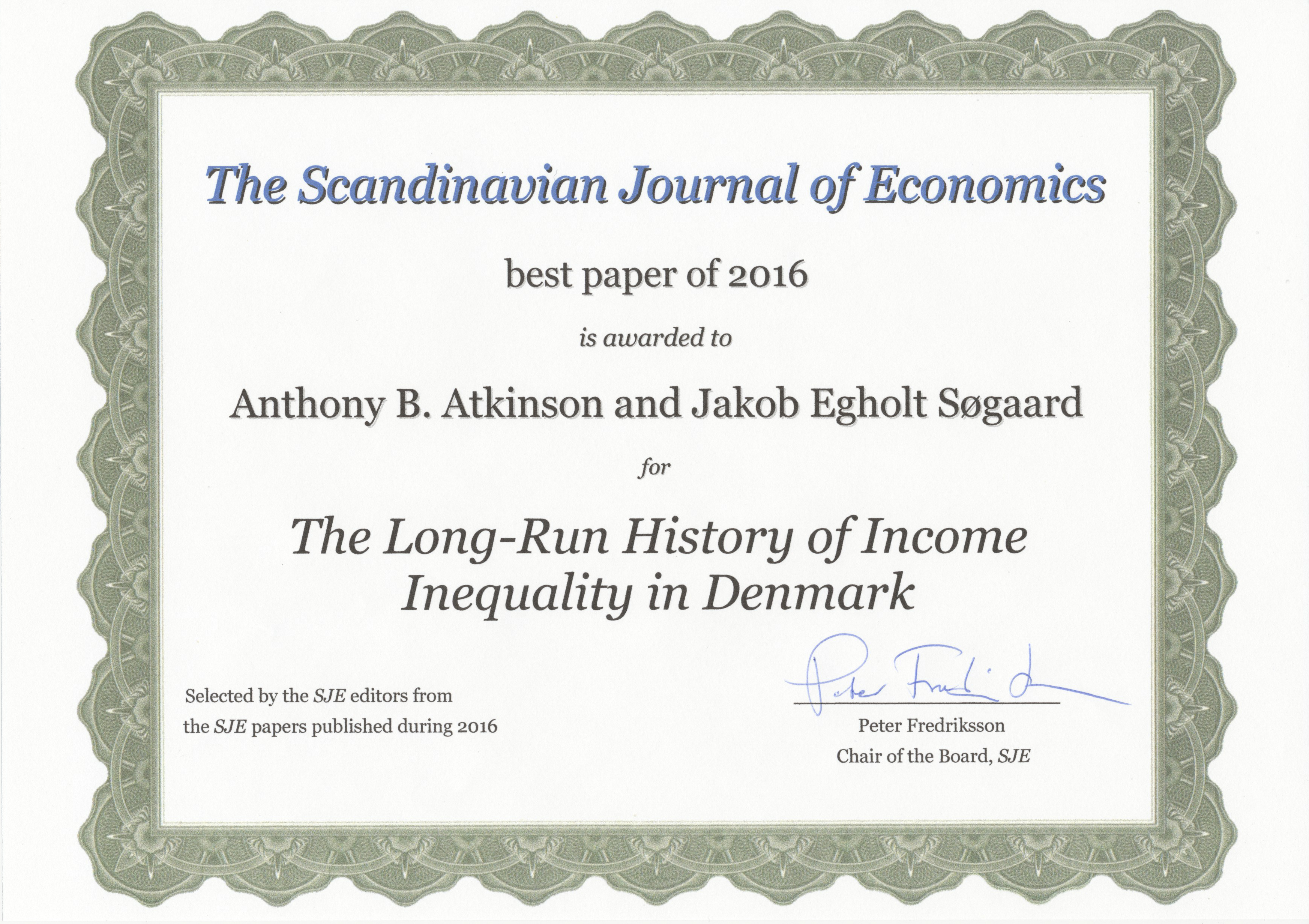SJE Prize for 2016 goes to Jakob Egholt Søgaard
The Scandinavian Journal of Economics announce that the editor's choice for the best paper of 2016 is "The Long-Run History of Income Inequality in Denmark" by Anthony B. Atkinson and Jakob Egholt Søgaard. The paper is now available to view and download at the publisher's web site.

Jakob Egholt Søgaard has graduated from the UCPH Department of Economics. Now he works at the Danish Ministry of Taxation – but we still benefit from his insights: Jakob lectures our course Public Economics.
Here is an introduction to the prize winning paper:
The long-run history of income inequality in Denmark is of considerable interest. Denmark is often portrayed as a country that has successfully combined economic performance with social safety. Certainly, in today's terms, Denmark scores well in league tables of income inequality. This leads naturally to the questions:
- Has Denmark in the past brought about a significant reduction in inequality? If so, when did it take place and how was it achieved?
- How well do top income shares work as proxies for the development in the overall income distribution?
- What other parts of the income distribution mirror the changes at the top?
Atkinson and Søgaard's study shows that income inequality and top income shares have declined during several distinct phases in between periods of stability. Also, the quality of the Danish data allows the authors to analyse not only the development in top income shares but also broader inequality measures such as the Gini coefficient. These analyses show that top income shares are a good proxy for the underlying development in inequality. Quoting their explanation in the paper:
"The study shows first that there have been epochs when Denmark has seen significant reductions in income inequality: (possibly) in the last 30 years of the 19th century spanning the start of the industrialization in Denmark, and definitely over World War II and in the 1970s. As a consequence, the decline is not simply a secular downward trend. Instead, there have been periods in between where the top income shares have remained stable and, most notably, spiked during World War I. This time path resembles, to a large extent, that of Sweden, which adds to the picture of strong co-movement in income inequality across countries until the 1970s, and increasing divergence since then.
Second, these patterns are present both when we consider the top income shares and when we examine the Gini coefficient, indicating that the top income shares are indeed a good proxy for the underlying development in income inequality. Likewise, our study shows that the reduction in the top income shares over the past century in particular benefitted the part of the population with incomes below the 70th percentile, while in contrast the income shares of the population between the 70th and 95th percentiles have remained remarkably stable. This has implications for the possible explanations behind the development."
The focus on top income shares stems from the fact that historical sources on the income distribution in most countries have primarily covered the top of the distribution, hence making the estimation of broader measures of inequality such as the Gini coefficient infeasible. In contrast, the data sources for Denmark extend well down into the income distribution from almost the beginning of the 20th century and Atkinson and Søgaard can – quite unusually – construct a series covering nearly one hundred years.
With the focus on long-run income inequality, the paper contributes to the recent literature on top income shares that has emerged since the studies by Piketty (2001, 2003), Piketty and Saez (2003), and Atkinson (2005). These studies have been influential in highlighting the dramatic changes in income inequality across many different countries since the beginning of the 20th century. Studies of this type have already been conducted on Finland (Jäntti et al., 2010), Norway (Aaberge and Atkinson, 2010), and Sweden (Roine and Waldenström, 2010), and the paper thus completes the set of Scandinavian countries.
